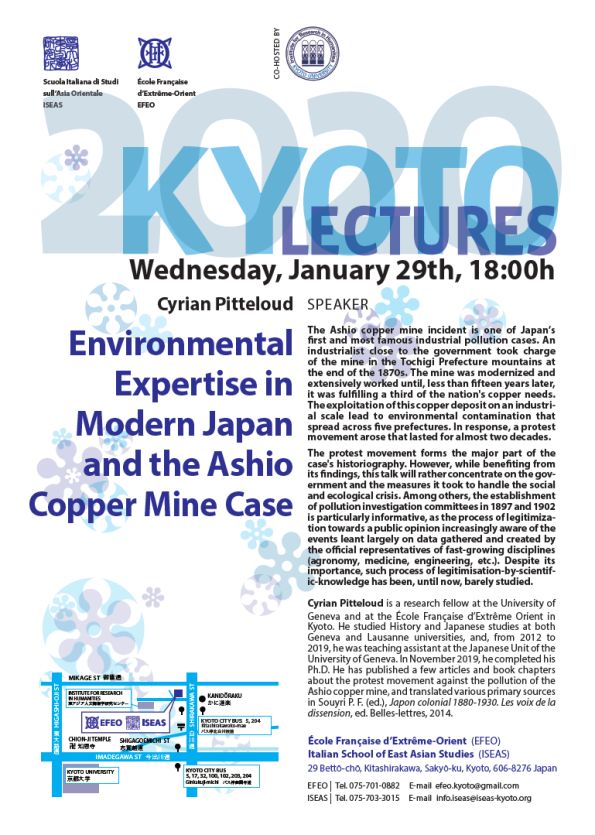The Ashio copper mine incident is one of Japan’s rst and most famous industrial pollution cases. An industrialist close to the government took charge of the mine in the Tochigi Prefecture mountains at the end of the 1870s. The mine was modernized and extensively worked until, less than fifteen years later, it was fulfilling a third of the nation’s copper needs. The exploitation of this copper deposit on an industri-al scale lead to environmental contamination that spread across five prefectures. In response, a protest movement arose that lasted for almost two decades.
The protest movement forms the major part of the case’s historiography. However, while benefiting from its findings, this talk will rather concentrate on the gov-ernment and the measures it took to handle the social and ecological crisis. Among others, the establishment of pollution investigation committees in 1897 and 1902 is particularly informative, as the process of legitimiza-tion towards a public opinion increasingly aware of the events leant largely on data gathered and created by the official representatives of fast-growing disciplines (agronomy, medicine, engineering, etc.). Despite its importance, such process of legitimisation-by-scientif-ic-knowledge has been, until now, barely studied.
Please refer to the attached document for more details.
Wednesday, January 29th, 18:00h
École Française d’Extrême-Orient (EFEO)
Italian School of East Asian Studies (ISEAS)

